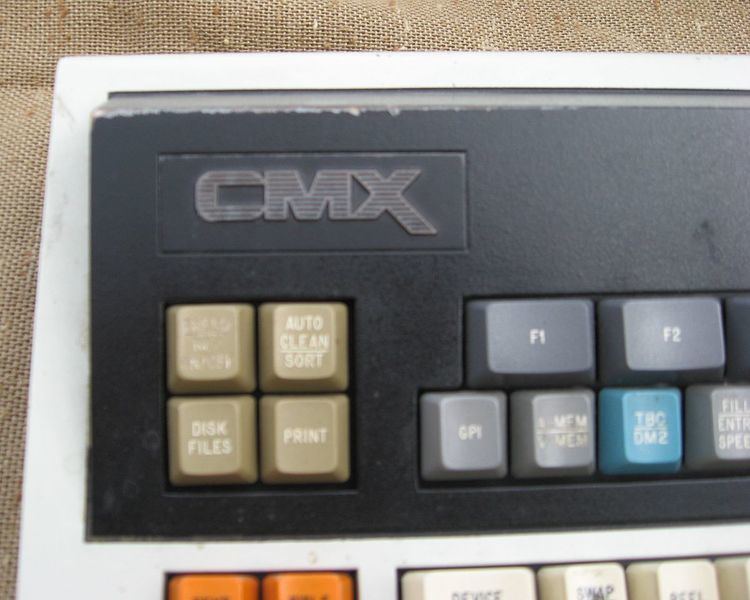 | ||
CMX Editing Systems (also known as CMX Systems) was a company founded jointly by CBS and Memorex; with help from many individuals such as Ronald Lee Martin, who later became a head of Universal Studios; that developed some of the very first computerized systems for linear and non-linear editing of videotape for post production. The company's name, CMX, stood for CBS, Memorex, and eXperimental.
Headquartered in Sunnyvale, California, the company pioneered in integrating computers with videotape editing, starting in 1971 with the CMX 600, the first non-linear video editing system. The 600 was designed primarily for off-line editing, by creating both a rough cut edit of a video program, along with an edit decision list, or EDL. It stored its video & audio content on disk pack drives supplied by Memorex for instant random access of the video content. The 600 was paired with the CMX-200, which took the edit decision list created by the 600, and automatically controlled several VTRs to auto-assemble the final program. The 600 was controlled using a Digital PDP-11 minicomputer, and the 200 used a Teletype Model 33 terminal to input EDLs from the 600.
CMX also developed the CMX-300 in 1972, a system used for online editing (and CMX's first online product). It was a computer-controlled linear editing system, with support for up to four VTRs, and also included and controlled a simple video mixer for wipes and fades. The edits were input to the 300 (and displayed) using a Digital VT-05 terminal.
CMX would later develop more advanced systems such as the 340 in 1976, and the CMX Edge, which could be used for both on and off-line editing.
CMX was sold to John Herbert Orr's company Orrox in 1974, and then moved its headquarters to Santa Clara, California. It was then later purchased by Chyron, and remained under its ownership until 1998, when Chyron announced that it would discontinue all CMX products.
During the mid-1980s, CMX hardware comprised 90% of all video editing systems used for post-production video editing.
The CMX keyboard control style was used as a basis of several other editing systems, including Grass Valley, Calaway and Strassner Editing Systems.
